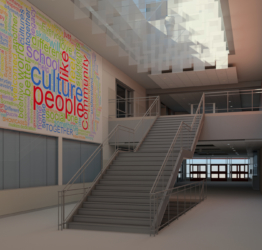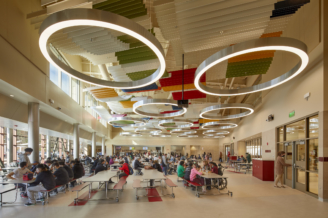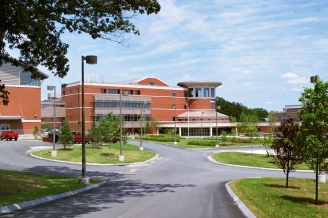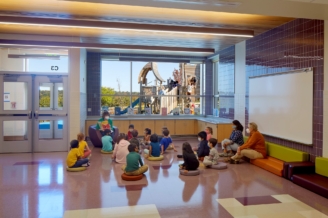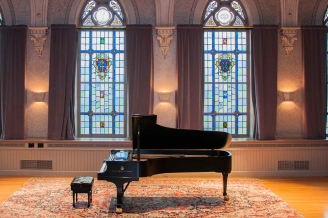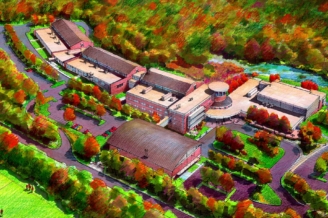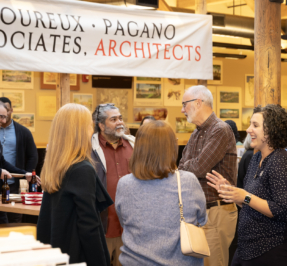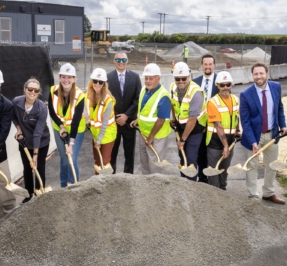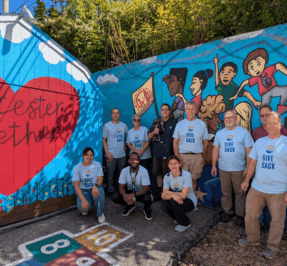School Design Addresses Equity, Inclusivity
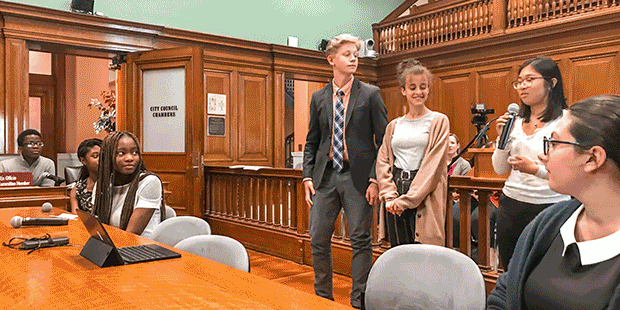
The promise of public education is to provide opportunity to every child regardless of ability or economic status. The reality is that there are disparities from one community to another that create disadvantages and obstacles for some students, and school facilities can absolutely help or hinder learning, either facilitating equity or serving as an impediment to opportunity. The best chance some communities have to address physical barriers to learning is when a district gets approval for a major renovation or new school.
A new school can address multiple issues: physical accessibility, indoor air quality, access to technology, and broadly creating an environment that feels welcoming and makes students want to be in the space. When done well, many of these things are seamless and invisible to occupants of the building, but it is worth noting since when they are not in place the impacts are very real.
The Massachusetts School Building Authority (MSBA), which, in partnership with local school districts, funds repair, renovation, and new construction, has a goal of greater equity across the state, but local communities’ ability to fund their portion of total costs limits their potential impact.
The City of Worcester has made public education a priority, putting their limited resources toward moving rapidly to provide state-of-the art high school facilities for more and more students in the district, with South High set to open in the fall, Doherty Memorial High School beginning construction, and Worcester Technical High School, now open nearly 15 years, already undergoing modifications to keep up with changes in the regional labor market. In all cases, fully accessible spaces and healthy, comfortable learning environments ensure that students’ focus is on learning.
Among the more common issues for older school facilities is uneven temperatures and indoor air quality. Modern, energy efficient HVAC systems optimize indoor air quality with proper ventilation and ensure temperature control, but also contribute to the overall health of the larger community. For example, the design for the new Doherty High School dramatically reduces the use of fossil fuels which is part of a larger Green Worcester Plan working toward a healthier environment city-wide.
Access to the outdoors, whether directly through connections to courtyards, playgrounds or adjacent parks and fields, or indirectly through daylighting features in the building itself are shown to positively impact learning and general well-being.
Enhanced technological capabilities also bring the resources of the world to the classroom. Access to information, learning tools and resources is now rooted in access to technology. Schools being designed today must support a student to device ratio of 1:1.
When LPA|A partners with a community to design a new public school the voices of the people who comprise that school community are critical to the process. Creating an environment that not only welcomes but celebrates the diversity of that community is at the forefront of every project.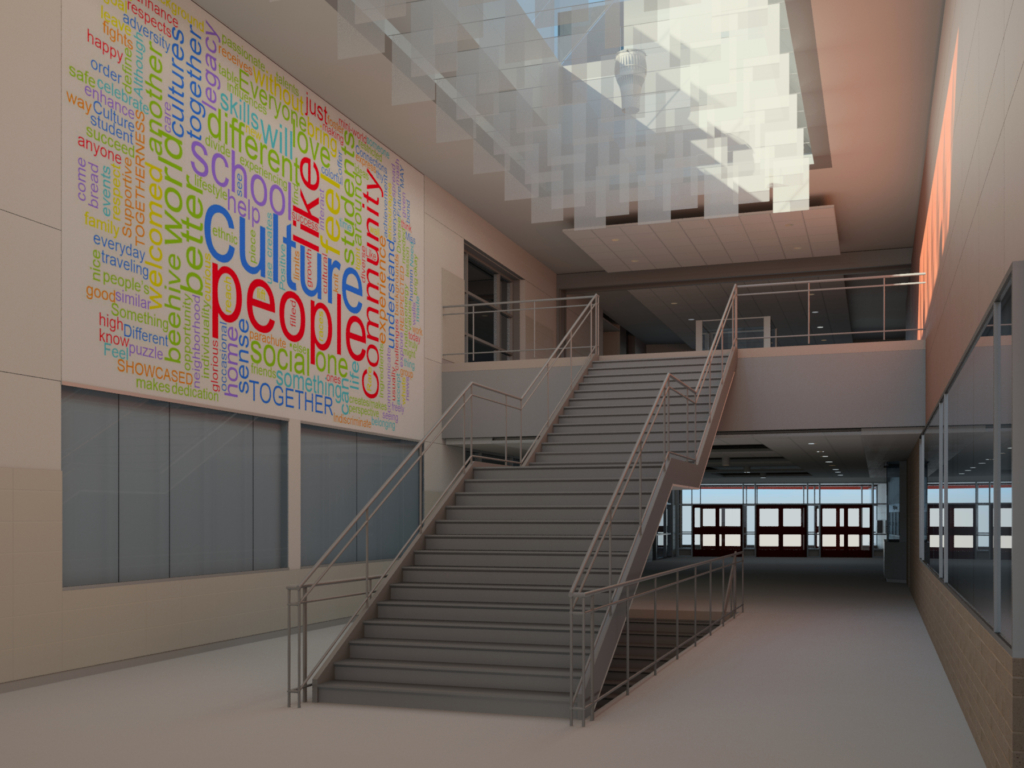
South High Community School provides a case study for ways to design a new facility at a level that offers the opportunity for a high quality educational experience and also creates an environment where differences are celebrated and shared so that everyone can feel proud of who they are, where they come from, and what they are capable of. LPA|A worked with Navneet Magon Anand, founder of Design Veritas to create the South High Design Lobby Project.
The lobby of the new school will feature artwork and other displays designed in collaboration with students, designers and other experts, including a history wall, a word wall inspired by the writings of students, video displays intended to both inform and inspire, and a mural that speaks to the meaning of community. The original South High’s display of flags that represent the many cultural heritages of students will again be part of the new school.
South High Community School serves a diverse community with English language learners, students with disabilities, people of every racial and ethnic background and socio-economic status comprising the 1,400-student community. The new school that these students will enter this fall will provide a space designed to facilitate learning in every way, even beyond the classrooms, including meeting basic needs of food and clothing, daycare and healthcare.
LPA|A is beyond excited to be part of efforts across multiple fronts to elevate the educational experience for students in and around the city, including continuing participation in the Worcester Public Schools Innovation Pathways Program which allows staff to interact with students directly, connecting their classwork directly to what we do in our work. The personal interaction with students is an important community service bringing awareness of architecture to students who might otherwise not be exposed to the field, but also reminds us who we are designing for and the impacts of our work.
Share This



